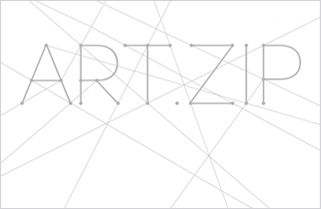
“I have organized two ‘Regeneration’ projects where an Art District was created in the forgotten districts of Poznan. The aim was to regenerate this dilapidated district through art. It was also important not to ‘force’ people to participate in the Art District. I made a ‘field’ which the homeless and unemployed people of the area, felt was important and this enabled them to identify with and participate in the event.”– Kasia Kujawska Murphy, artist curator
“在被人遺忘的波茲南地區(Pozan)有個藝術區,我在那裡組織了兩次名為‘再生’的藝術項目,目的是為了通過藝術來振興這個衰落的區域,強調的是不能強求人們去加入這個藝術區。我還特意為無家可歸的人和失業人士建了一個‘小基地’讓他們感受被大家關心和關懷,使他們能夠一起參與這個活動。”──卡西亞·庫左斯卡·墨菲,藝術家策展人
Many artist curators situate themselves firmly in the role of artist activist, a radical element in society with a responsibility to bear witness, to agitate and to be inclusive.
The passionate and ‘educative’ approached described by Brendan Jamison in his interview is one which I and most the artist curators in this feature, have put into practice, it also connects with the desire to move art outside galleries and to reach out proactively to the public rather than passively ‘waiting for them to come to us’.
Artist curators are often in a better position to address inequalities in critical/ public perception of the use of different media i.e. all media on an equal footing, with no ghettoising or hierarchy. The desire to be inclusive, which does not entail sacrificing artistic standards, is something most of us seem to share giving maximum value to each artwork and each participating artist’s voice. Echoing the views of Louise Ascroft in the section of Transformation, I would say that artist-curator are not afraid to break rules and respond intuitively to exhibition spaces; we are interested in creating shows/projects which include installations, digital/sound/video work, paintings, textiles, 3D work and performance, shows that don’t just have their eyes on the next commercial ‘big thing’ and which value contrast over homogeneity. Generally, we like to work with artists from other cultures and other disciplines because it’s interesting – it’s not ‘tidy’ or fixated only on the end product, we want to explore the process, share it, be activists and make something meaningful, something needed to be done, then do it.
許多藝術家策展人毅然地把自己定位為行動主義者,承擔著見證、激勵和鼓舞平等的責任。
布伦丹·贾米森在受訪時提到了積極主動和具有教育意義的方法論是我和大多數藝術家策展人所認同的並落實的,另外,把藝術挪到畫廊以外的地方去主動接近大眾而不是被動地等待大眾靠近也是我們所堅持的。
藝術家策展人往往更容易運用不同的媒介來提出不平等的問題,從而倡導平等,無分階級。渴望被包容的欲望是我們在其中所體會到的,這並不意味著要降低藝術的質量,反而使參與的每一件藝術作品和每位藝術家的心聲以及所要闡述的含義和價值最大化。回應路易丝·阿什克罗夫特(Louise Ashcroft)在‘轉型’章節的觀點,我認為藝術家策展人不害怕打破規矩和對策展空間做出直觀地反應。我們感興趣的是創辦活動和展覽,其中包括裝置藝術,數字/聲音/影像作品,繪畫,紡織,3D作品和行為藝術,不只是局限於挖掘下一個商業價值,而是提倡差異勝於趨同。一般情況下,我們希望與不同文化和領域的藝術家合作,擦出有趣的火花,我們不需要‘乾淨’的成品,也不迷戀成品本身,而是去探究和分享當中的過程,積極主動地做一些有意義的事,做需要被完成的事。

